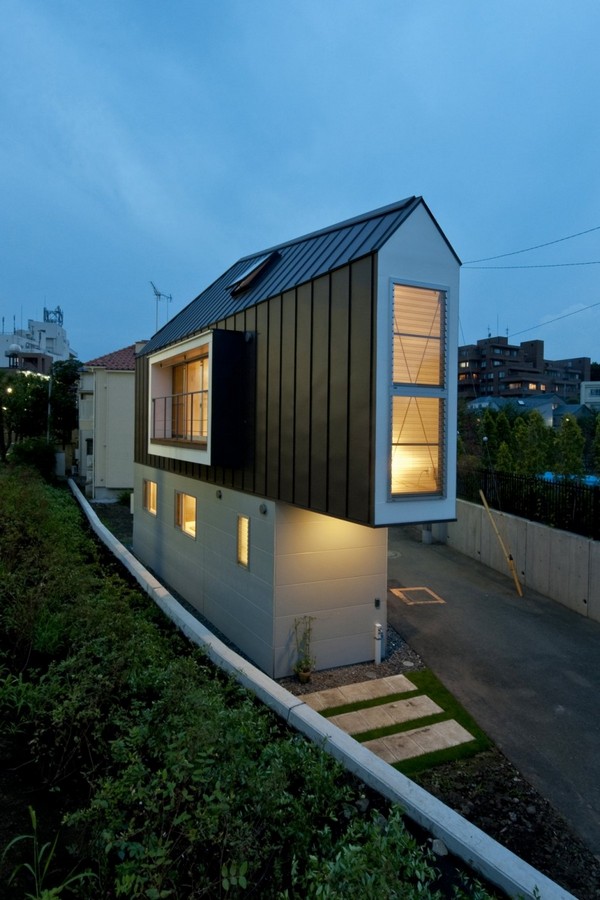After living in NYC for about 7 years, I thought I was fairly well accustomed to living in small quarters – studio apartment, storage everywhere, continuously optimizing my use of space. But of course, the Japanese have us New Yorkers beat when it comes to efficiently using space. After a bit of digging around on the monster web, here’s a few cool examples of tiny Japanese architecture, “kyo-sho-jutaku” in Japanese, apparently.
- The River Side House in Tokyo, designed by Mizuishi Architect Atelier. I love the architect’s use of the top attic space for a childs play area, keeping the space safe for kids with railings, but still allowing lots of natural light to pass through. The other notable area of the house is the office/common area, with large windows on either side, and a full length bench that hides lots of storage boxes.

- Lucky Drops micro homes designed by Yasuhiro Yamashita. Their like little drops of rain, and have just enough space for two people to live – and takes up about a parking spot’s worth of space. The home is constructed with a rib-and-skin technique, so that interior space is maximized, and the translucent skin lets in lots of daylight. Also to maximize space and light, all of the main surfaces in the home are made of perforated metal, to allow sound and light throughout – like a submarine.

- This Small House in Kyoto City is actually fairly close to the kind of home I’d love to live in – or at least have as a 2nd home. It’s small, simple, but looks large enough to be comfortable to live in, host guests at, and be styled by the people living in it – not the other way around. In addition to this small home, architect Kazuya Morita has also designed this nifty Pentagonal House albeit without the reciprocal roof structure seen in other pentagonal housing designs.

- The venerable Japanese Capsule Hotel. Definitely not a new concept, but interesting nonetheless. With housing and hotel prices so high in Japan, “Capsule Hotels” offer people a one-man pod to sleep in for the night. They’re everywhere, and last I heard run about $30-$50/night. They put about 10 of these pods in a room, and it really is nothing more than a plastic chamber with an integrated mattress and some other basic amenities.

- This nifty building in Tokyo, which even has space for a car park.

Comments
One response to “Tiny Living: My Top 5 Super Small Japanese Living Arrangements”
lavet! small yet so elegant.